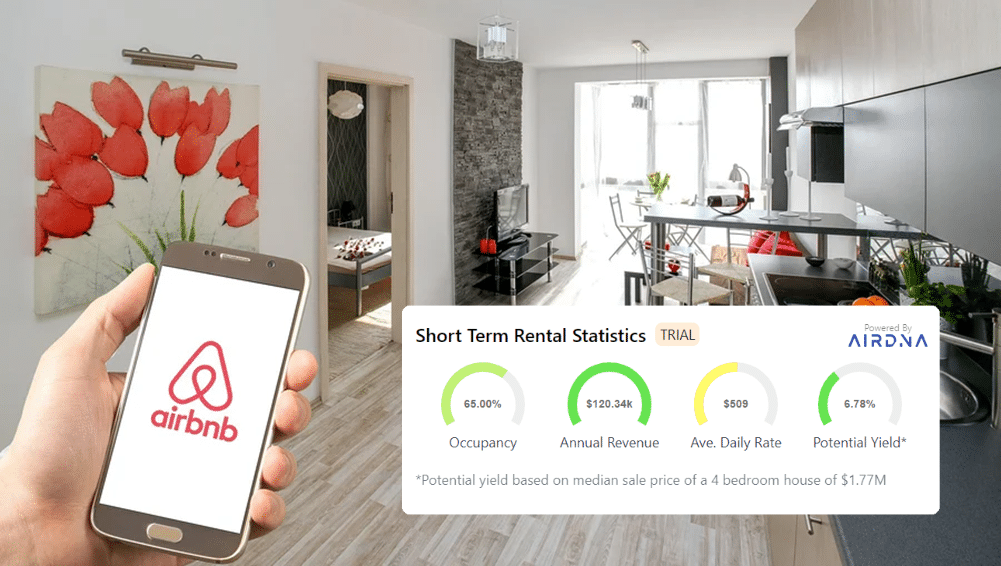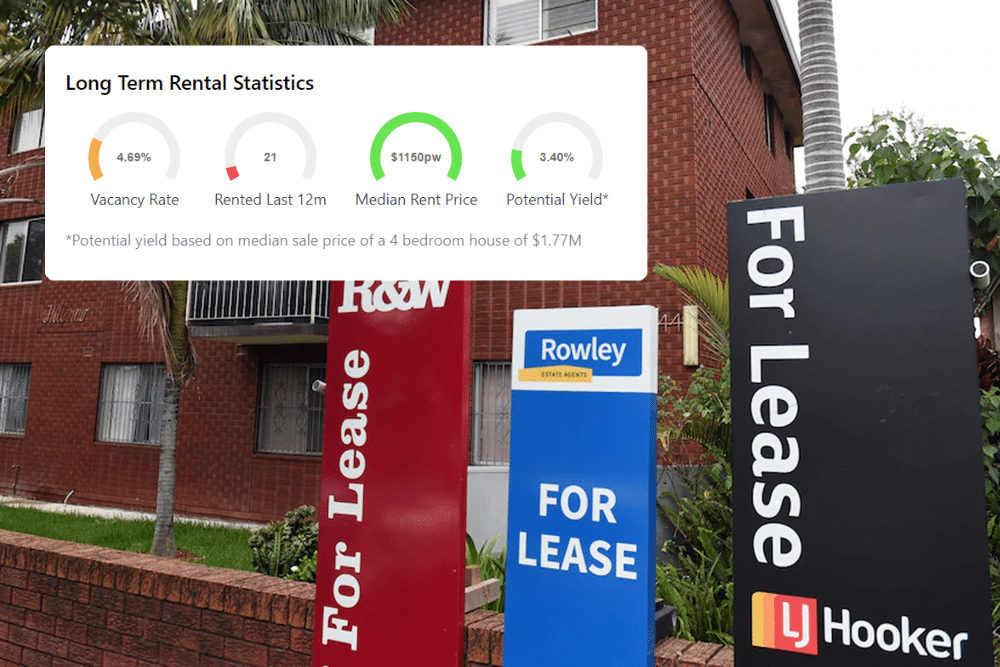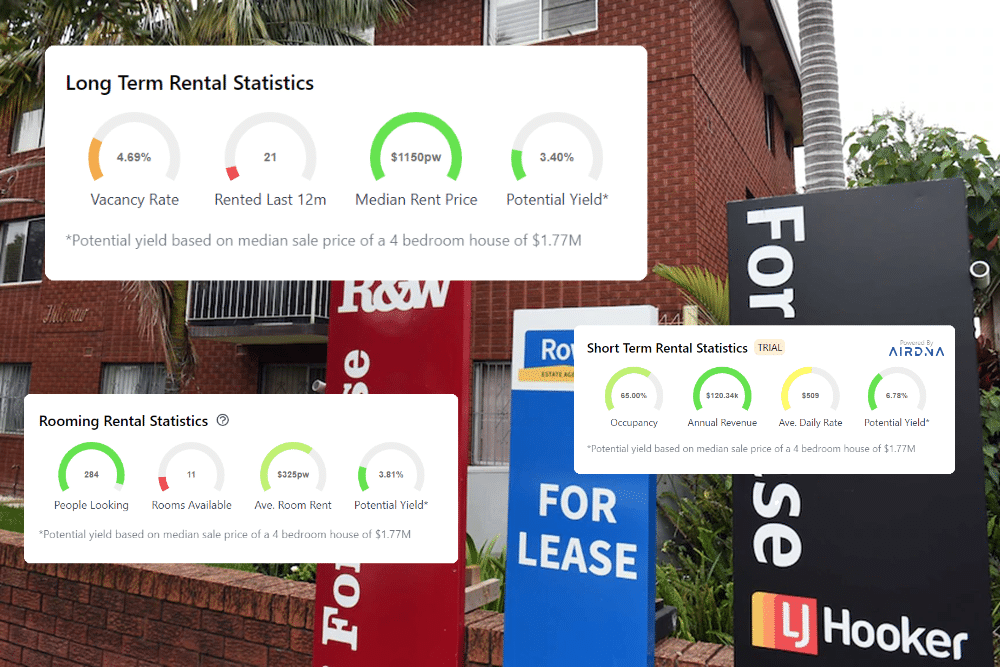There is no one size fits all when it comes to maximising your rental yield
Rental property investments can be a great way to generate income and build wealth. However, it is important to maximise your rental yield to get the most out of your investment. There are several different strategies you can use to maximise your rental yield, each with its own pros and cons.
What rental yield strategy is best for you?
If you are looking to maximise your rental income and have the time and resources to manage the property, then short term rentals may be a good option for you. If you are looking for a lower-maintenance option, then share houses or long term rentals may be a better choice. Let’s break them down below.
Stash can help you analyse every yield strategy for every property in the country, from likely income and occupancy of short term rentals, the demand for rooming & share housing and stats on long term vacancy rates and yields.

Take the 7 day challenge
Stash partners with some of the leading property investment & development educators in Australia.
Become a member of Stash to learn the ropes on becoming a property investor or developer. Take the 7 day challenge and get free access to Stash to begin your path to financial freedom.
Stash can help you understand the potential yield of any property in the country with Rental Insights
Short Term Rentals
Short-term rentals are properties rented out for brief periods, typically ranging from a few nights to a few weeks. This category is exemplified by platforms like Airbnb. These rentals are often furnished and include amenities to accommodate tourists or travelers. The appeal of short-term rentals lies in their flexibility for both property owners and renters, as well as the potential for higher rental income, especially in popular destinations or during peak travel seasons.

Buy and rent your investment on Airbnb and others. Do the numbers stack up?
Pros:
- Higher Potential Income: Short-term rentals often command higher nightly rates than traditional rentals, especially in tourist hotspots or during peak seasons.
- Flexibility: Owners can use the property themselves when it’s not rented out, making it ideal for those who want a vacation home.
- Dynamic Pricing: Prices can be adjusted for different times of the year, events, or weekends, maximising earnings.
Cons:
- Increased Management Effort: Frequent turnovers mean more cleaning and maintenance.
- Inconsistent Income: Earnings can fluctuate seasonally, and unexpected events (like a pandemic) can drastically affect demand.
- Regulatory Challenges: Many cities have restrictions or require special permits for short-term rentals. Likely this is going to get harder in some states.
Share Houses
A rooming or share house involves renting out individual rooms within a property to different tenants, rather than leasing the entire house to a single tenant or family. This approach is common in areas with a high population of students or young professionals. It provides tenants with affordable housing options and social interactions with housemates. For landlords, it can mean a steady cash flow and diversified risk, as income doesn’t rely on a single tenant.

Turn your investment into a share house to maximise your yield?
Pros:
- Steady Cash Flow: Rent from multiple tenants can provide a consistent income.
- Diversified Risk: With multiple tenants, you’re less affected if one moves out.
- Community Appeal: Some renters prefer the social aspect of shared living spaces.
Cons:
- Management Complexity: Dealing with multiple tenants can lead to increased disputes and management issues.
- Higher Turnover: Shared housing often attracts short-term residents, like students, leading to frequent turnovers.
- Wear and Tear: More residents typically mean more maintenance and repair costs.
Long Term Rentals
Long-term rentals refer to properties leased on a longer basis, typically for six months to several years. These rentals are usually unfurnished, and tenants are responsible for their own utilities and sometimes minor maintenance. This type of rental offers landlords a consistent and predictable income stream with lower turnover rates and management efforts. It appeals to tenants looking for stability and the sense of a permanent home.

Australia is facing a rental supply shortage.
Pros:
- Consistent Income: Long-term leases provide steady, predictable income.
- Lower Maintenance Costs: Tenants often take care of minor maintenance, reducing expenses.
- Less Time-Intensive: Fewer tenant turnovers mean less time spent on advertising, screening, and preparing the property.
Cons:
- Lower Flexibility: You can’t use the property or adjust rental prices as easily.
- Risk of Problematic Tenants: Long-term tenants can be difficult to evict, even if they’re problematic.
- Market Fluctuations: Rental prices are locked in for the duration of the lease, which could be a disadvantage if the market rate increases.
The optimal rental strategy depends on your individual circumstances and goals. Consider the following factors when making your decision:
-
Rental income objectives: If maximising rental income is your priority, short term rentals may be appealing. However, consider the additional work and risk involved.
-
Time commitment: If you have limited time to manage your property, long term rentals offer a more hands-off approach.
-
Risk tolerance: If you’re risk-averse, long term rentals may be preferable due to their lower likelihood of property damage or tenant issues.
-
Location: If you reside in a popular tourist area, short term rentals may be more lucrative. However, if your location is less frequented, consider rooming or share houses or long term rentals.
Regardless of the rental approach you choose, consider these tips to further maximise your rental yield:
-
Conduct thorough tenant screening: Carefully vet potential tenants to minimise the risk of rent arrears, property damage, or evictions.
-
Maintain your property: Regularly maintain your property to ensure its appeal and longevity, attracting and retaining tenants.
-
Set competitive rental rates: Research comparable properties in your area to determine fair and competitive rental rates.
-
Utilize property management services: Consider outsourcing property management tasks to professionals if your time is limited or you lack the expertise.
By carefully evaluating your options and implementing effective strategies, you can maximise your rental yield and reap the rewards of your investment. Remember, the ideal rental approach aligns with your individual circumstances, goals, and risk tolerance.



